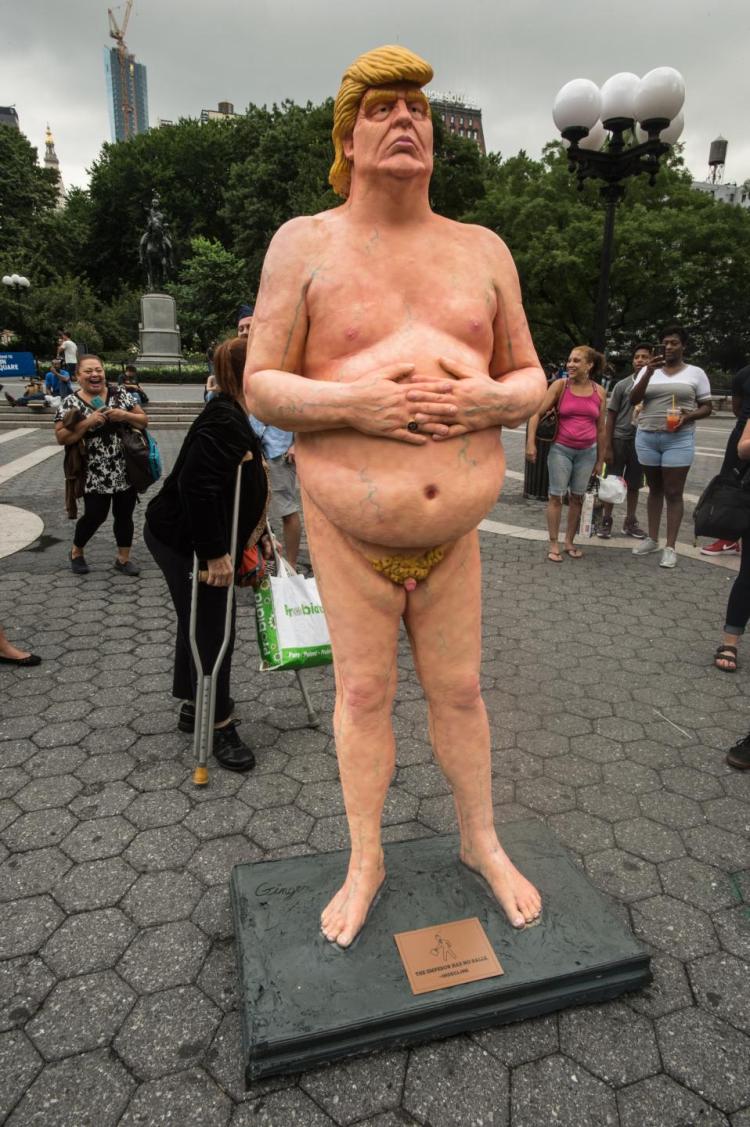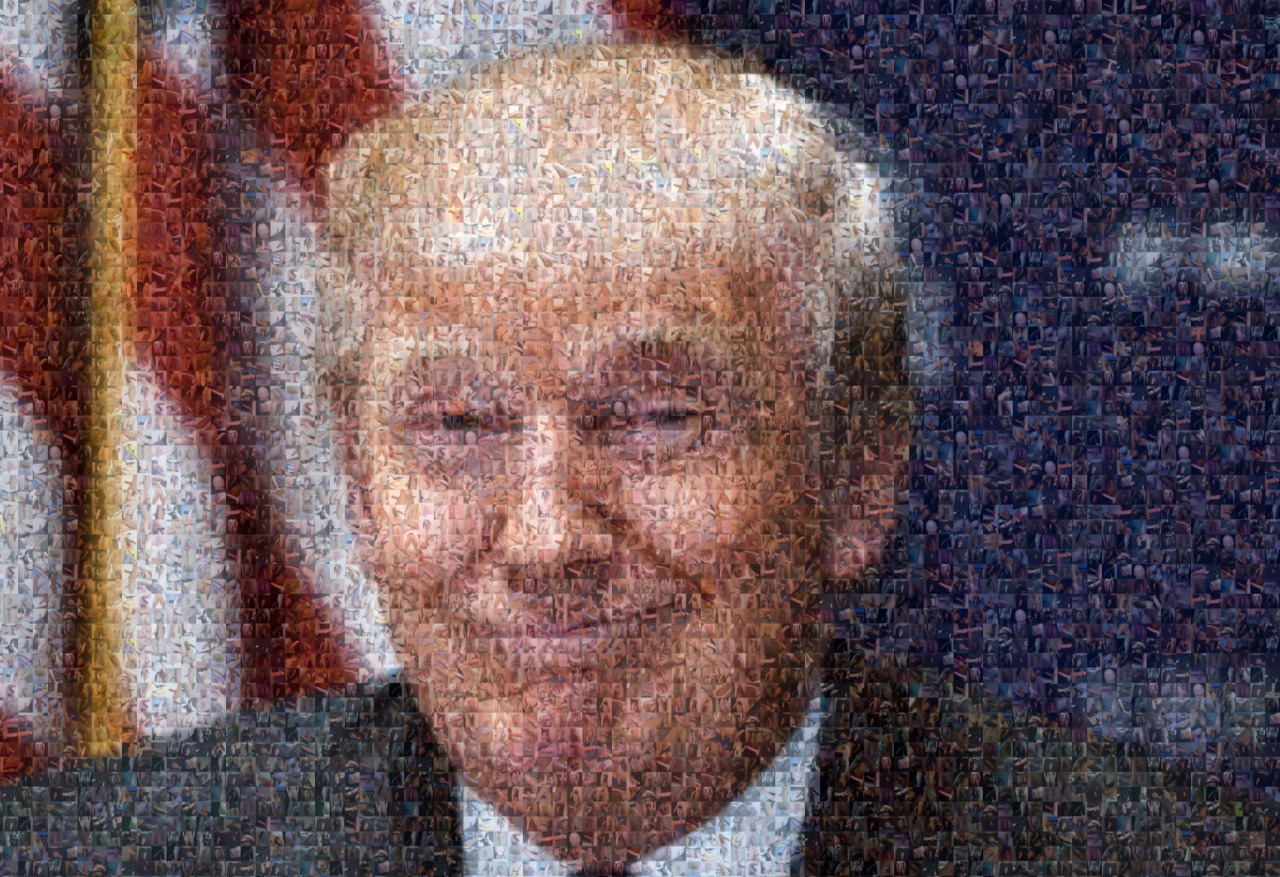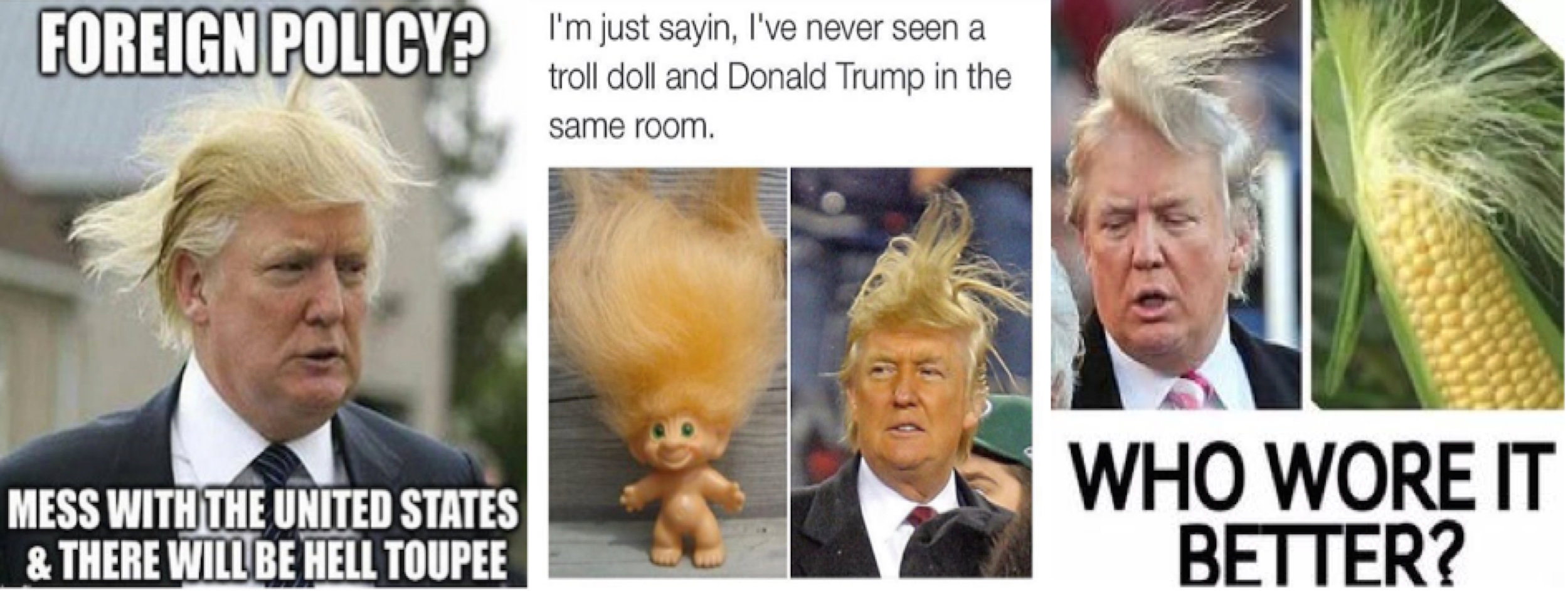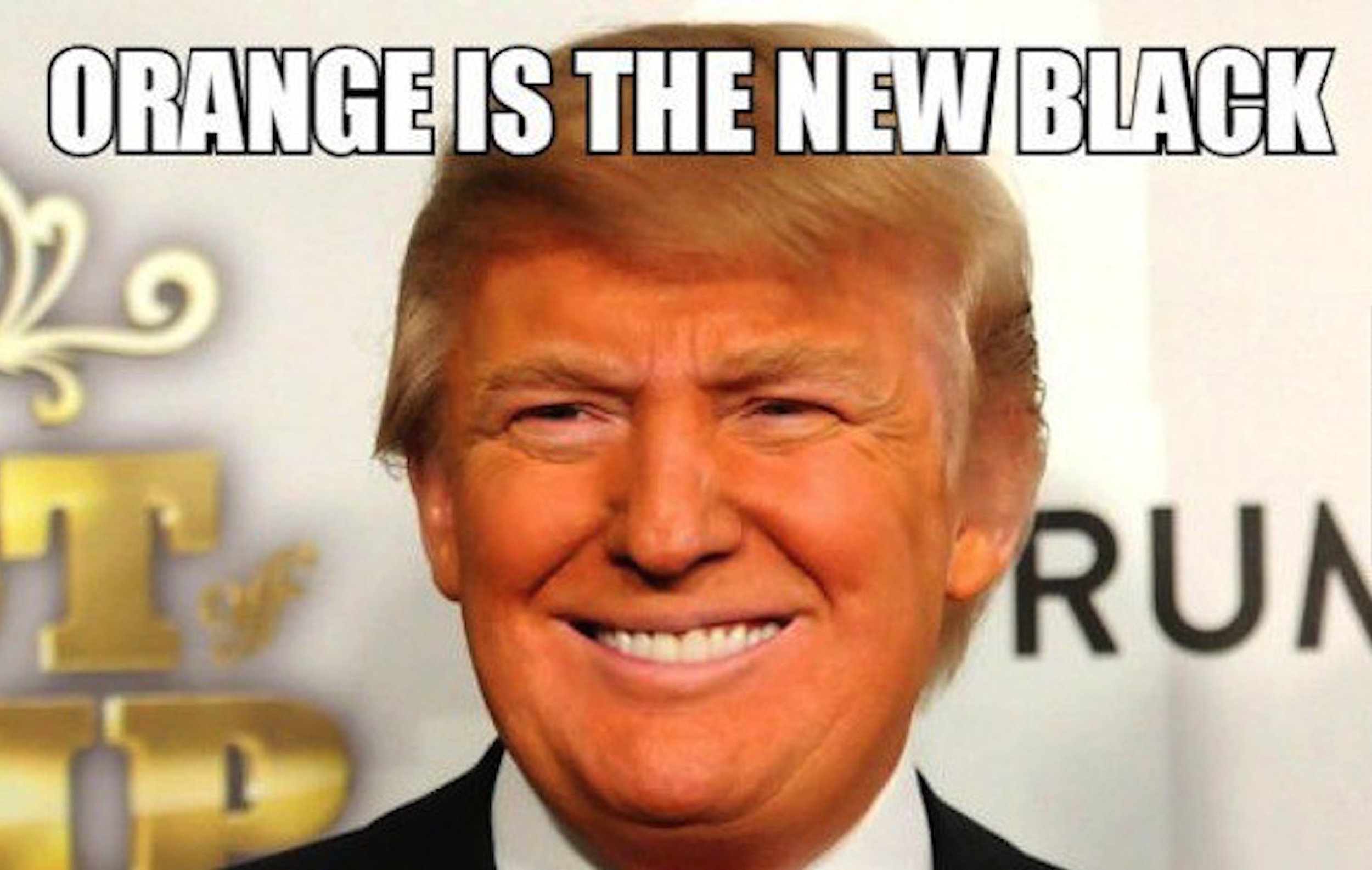The First 100 Days of an Electrate President:
Post-Truth, Alternative Facts, and Fake News in the Third Sophistic
Scott D. Sundvall
Post-Truth Era, “Alternative Facts,” and “Fake News” [1]
Rhetoric cannot reasonably claim it concerns truth. In response to the First Sophistic, Plato’s “denunciation” of doxa (belief), in favor of episteme/logos (truth), underscores the difference between aletheia (reality) and the persuasive engagement of and with such a reality (McAdon 2004). Still today, a suasive force does not necessarily concern the “facts.” By way of rhetorical appeal, people can still yet be persuaded to act irrationally, unreasonably, and dangerously (Plato’s concern)—without factual substantiation or with fabricated, “factual” substantiation—in such a way that the people, themselves, are at risk. That is, the polis has always been threatened by the choratic element of rhetoric. So what is the relationship between rhetoric and truth, especially in contemporary times—especially with regard to the Trump administration in general, his first 100 days in particular?
Within the first two weeks post-inauguration, the Trump administration mobilized the potential of rhetoric contra truth second to none in American presidential history. Indeed, the Trump administration has effectively called into question the science of climate change, challenged time-stamped photographs and Metro data regarding inauguration attendance (going so far as to say it was the most attended inauguration in history), and intentionally miscommunicated the threat of certain Muslim immigrants, amongst numerous other claims. And this is to say nothing of Trump’s campaign rhetoric, or his dismissal of questions regarding such rhetoric (even as video-taped) as “dishonest.” Trump latched onto the ancient wisdom of the First Sophists, who primarily trained public figures in political discourse: if people want to believe you, and if you spin it the right way, then people will believe you.
To be sure, we find ourselves in a post-truth era grossly populated with “alternative facts,” especially as propagated by “fake news.” “Alternative facts” or “fake news,” however, do not (only) arrive in the form of journalism proper, such as articles or stories from credentialed news outlets or White House press briefings; they most often surface in social media as tweets or Facebook status updates, as relayed from stooge “news” sites. [2] Yet Gregory Ulmer’s electracy and Victor Vitanza’s Third Sophistic denote how this emergent rhetorical procedure is not an exception to the rule, but rather how this emergent rhetorical procedure is the governing rule.
To this end, we mark Trump as the first truly electrate President. While former President Barack Obama used platforms such as social media to campaign and garner contributions, electracy concerns not whether or not one uses the digital tool or mediun but rather how one engages the digital apparatus writ large. Trump chartered the electrate program: post-truth, alternative facts, and “fake news”; entertainment and celebrity logic; affect and Flash Reason (Ulmer 2012). The election of Trump represents little more than the election of a persona, a figure, a brand—that is, a digestible ideology pre-commodified for general consumption, albeit in necessary and proper electrate form.
“We’re not Safe”: Fear and Doxa
Trump’s executive order regarding immigration is purely rhetorical and ideological, a measure of competing doxa: immigrants from seven predominately Muslim countries, including refugees seeking asylum, are immediately banned from immigrating to the United States; Christian refugees, however, are given priority immigration privilege. [3] In more colloquial terms, we might even refrain from calling such an order rhetorical or ideological and instead frame it as xenophobic or theocratic (in minor). Indeed, the order has little, if any, legitimate and practical political dimension. The apologia and epideictic rhetoric from the White House defending the order relies solely on the affect of fear and provides no substantive, political account for the exigency of such an order. As has been repeatedly reported, not a single American has been killed on American soil by any immigrant from the countries banned, and even the 9/11 attackers hailed from countries suspiciously not included in the ban. [4]
The Trump administration’s rhetorical use of the politics of fear, however, extends beyond a simple Islamophobia; it relies upon a wider, conspiratorial fear of the very structure of the “establishment” writ large. Because the Trump administration has no substantive, political basis for the ban, it must rhetorically invent one. We again discover a simple epideictic maneuver: discredit the media; provide false narratives and alternative facts; reproduce fear with jingoistic slogans, via platforms as simple as social media, such as Trump’s use of Twitter. This not only puts the media—as part of the “suspect establishment”—on the defensive, having to debunk the Trump administration’s false narratives and alternative facts, but it also renders the media itself as a factory of dishonesty. This provides us with the (dangerous) post-truth sophistry of “believe what you want; everything is true/false”—the final triumph of doxa over episteme/logos.
The prevalence of doxa over episteme/logos has perhaps been even more pronounced in the Trump administration’s rebuttal of environmental science and human-caused climate change, leading to the gag order on the Environmental Protection Agency and legislation that pulls back various environmental protections. [5] Yet Trump could not merely refute science—for how does one refute science? Rather, Trump again championed a politics of fear: human-caused climate change is a “scientific myth” created by the Chinese to impede the competitive business prospects of America. [6] As we will discuss below, scientific facts (true/false), when used rhetorically in the age of electracy, are mere relics from they dusty and antiquated past of literacy. In the age of electracy, citizens respond affectively to fear much more readily than they respond intellectually to information.
Perhaps most to the point: the Trump administration’s contestation of the inauguration attendance numbers—going so far as to say it was the most attended inauguration ever—despite Metro data and time-stamped photographs.
Re/Solution: Counter/Strategies
This might seem obvious enough, superficial even, but what needs to be further examined is how such a shift in rhetoric became possible in the first place. Our contemporary appointment of doxa over episteme/logos is the structural/practical and metaphysical/rhetorical result of electracy, resolved in terms of rhetoric by the Third Sophistic. In the practical/structural sense, the internet provides an endless stream of information, news and opinions on demand. But everything comes with a cost. First, following the principle of scarcity, valid information becomes less valuable when it is more obtainable. The proliferation of availability of scientific facts, for example, makes such facts seem less prestigious, and they often get conflated with competing, “alternative facts” which are equally accessible online. Second, fingertip access to such a wide expanse of news, information, and opinion means an increase in our capacity for consumption of such, whether such news, information, and/or opinions are valid or not. And what is most conveniently accessible structures popular opinion (doxa)—hence Trump’s clever use of Twitter, which has over 28 million followers. In short, the “fake news” and “alternative facts” that characterize our post-truth era are provided by a rapid proliferation and availability of news and facts, as afforded by the digital institution. Such is Marshall McLuhan’s thesis redoubled: if “post-truth” is the message, it is delivered by the digital medium (McLuhan 2016).
Metaphysically/rhetorically, electracy contends that our digital age, as compounded by ubiquitous computing (ubicomp), is governed by a different orientation and logic than that which governed literacy: joy/sadness (affect) over true/false (episteme/logos); entertainment over science; fantasy over knowledge; figure over argument (logic of celebrity), etc. (see the chart below). A rhetorical self becomes brand, an emblem delivered through a new form of ekphrasis (Ulmer 2012, Morey 2015). Trump, the pioneer of Celebrity Apprentice and guest of spectacle on World Wrestling Entertainment bouts, has mastered this electrate figure of rhetoric. Trump did not need people to believe his rhetoric (in fact, if people did so, it would likely have been damaging to his presidential prospects); he only needed people to believe in him, to follow him and vote for him. As many Trump voters claim, they themselves are not racists, xenophobes, sexists, misogynists, ableists, classists, etc., even though such rhetoric constituted the crux of Trump’s campaign. They simply liked the guy (figure qua brand).
Gregory Ulmer’s “Electracy Chart,” available on his Learning Screen blog.
But not all is lost in this shift to electracy, though such a shift might produce a sense of “mourning,” of loss and even melancholia (Ulmer 2004). The Third Sophistic provides a rhetorical method for engaging the electrate apparatus that now structures our lives. It provides us with an innovative method for handling the first 100 days of Trump—and everything thereafter.
The rise of Trump and the consequences of his executive orders and legislation over the first 100 days must be attributed to his electrate sensibility and cunning, as noted above. To this end, we do not need the development of media literacy, information literacy, digital literacy, or any literacy for that matter, so much as we need the development of electracy. Teaching students and citizens how to properly seek out and discern valid information and contemplative rhetoric assumes that the same students and citizens will be more likely persuaded by such (literate) information and rhetoric than electrate forms of information and rhetoric. Or that such methods will persuade others. Literacy is still a vital component of intellectual development, but literacy is not winning elections, swaying the winds of global power, as indicated by the election of Trump. The post-truth era has already arrived, a Third Sophistic in need of sobering reanalysis, and using the apparatus logic of the past (literacy) to combat the rhetoric of the present (electracy) will win few battles. At the very least, such did not win the presidential election.
[A JOKE!]
Consider e.e. cummings’ appropriation of a burlesque joke to describe his writing method: “Would you hit a woman with a child? No, I’d hit her with a brick” (cummings 2007). Though violent and crude, the joke relays the exigency of electracy and the Third Sophistic in several ways. First, by way of word play, it gestures to the necessity of unconventional thought—thought perhaps otherwise not anticipated but nonetheless necessary. Second, it uses the affective dimension of humor to convey a more abstract, thetical point. Third, as a joke, the abstract, thetical point arrives as a punch line, emblematic of the “Flash Reason” that governs electrate knowledge and the exchange of such (Ulmer 2012). Regardless of political subscription, Trump’s election came as a surprise to most Americans, perhaps even to Trump himself. His election and his executive orders hit many of us quite suddenly and as figurative brick—and we are the butt of the joke. While we might be discussing whether or not such a joke is appropriate, the joke—and all of its rhetorical import—prevails. We need not such a discussion but our own jokes, our own punch lines, our own intellectual clowns.
Advocacy for unconventional thought, in this sense, is something of a contradiction, a paradox at best: promoting electrate conventions, rather than literate ones, for engagement with and through the digital institution as (somehow) unconventional. If an apparatus, such as electracy, is “a social machine, partly technological, partly institutional,” the paradox arrives because the technology and institution arrive first, and the social conventions in response to such arrive only thereafter (Ulmer 2017). Trump ran an unconventional campaign, an electrate campaign, yet his unconventional campaign proved congruent with the emerging conventions of electracy. By extension, we can say the same of his rhetoric and his first 100 days in office. The conventions of Trump’s otherwise unconventionality are clear and follow the electracy paradigm: entertainment, figure, and fantasy. Clearly, citizens were entertained by the figure. To be sure, the entertaining figure determines the primary rhetoric, rather than the secondary, otherwise rhetoric content delivered by the entertaining figure. In Third Sophistic terms, Vitanza writes:
We all wear masks. Remember, Nietzsche says, whoever wears a mask is profound. (Of course, I fool myself, and yet we are all fools). We all weir either proper or inpropria persona when we write. (But this wearing of a mask does not mean that underneath or on the other side, there is a real, fixed, authentic person! I am not an essentialist of that sort). And if we are confronted with different audiences (different desires, forces) and if we have different things (forces) to express, doesn’t it follow that we need many different masks (folds)? (1996, 19).
In electrate terms, Trump knows how to brand, how to rhetorically shuffle his masking. How to sloganeer and emblematize. Such does not denote a pathology, per se, but such rather indicates an ability to rhetorically transform, in persona and delivery (as though we can divide the two), according to the desires of a given audience. In short, Trump himself—as brand—is the rhetoric. Trump uses his persona-rhetoric, however, to both reproduce his persona-rhetoric and to give suasive force to his propositions: Trump, as a multi-billionaire as much a part of the establishment as anybody, will use such establishment affordance to wear the mask of anti-establishment hero. This is the fantasy. As Deleuze and Guattari (members of the Third Sophistic) generally frame it, collective, political fantasy derives from paranoiac desire as much as from anywhere else: they are out to get you; I am here to save you (Deleuze and Guattari 1983). In other words, the narcissistic despot-figure entertains with a rhetorical of mask of security, while promoting a fantasy of fear. We saw this during Trump’s campaign; we see this now during his first 100 days in office.
Affect must also be considered, though not necessarily in the way affect theory has intellectually developed such. For example, Brian Massumi, one of the pioneers of affect theory, considers how affect can engender an ontological politics wherein the potential or possibility of something as a threat can overshadow present circumstances, even the present circumstances and consequences of actions leveled to prevent such potential or possible threat (Massumi 2010). In simpler application: Trump’s executive order on immigration. That is, the preventative measures might be worse than that which the measures are supposedly and potentially, possibly preventing. Yet there is complex, deliberative rhetoric behind such an affective gesture—one that cultivates what it incites. In order to arouse an immediate, affective response to the yelling of “fire!” people must already understand fire as a threat. The same goes for immigrants, human-caused climate change, or any other rhetorical topic. The power and rhetorical potential of affect is that it precedes and exceeds contemplative and intellectual effect.
Diane Davis’ rhetoricity provides an ontology of rhetoric, as extension of the Third Sophistic, that suggests that affect-ability and response-ability undergird and make possible rhetoric proper (Davis 2017). That is, before we have a persuasive force (classical rhetoric), we first have a suasive force (rhetoricity). Indeed, affect and immediate response not only precedes and informs rhetoric proper, but in the age of electracy such might supersede such. This is the realm of desire-aesthetics. If Trump mythologized himself according to the affective dimension of consumerism (as we argue), we must demythologize him, drawing upon the same register of popular culture, affect, and response that he himself used. (Might we suggest a Mystory, or the Popcycle?) [7] If the (electrate) aesthetics of a multi-billionaire as rhetorical figure, campaigning for the presidency (and his first 100 days after winning such a bid), denotes a desublimation, then we must resublimate in a way that rethinks political aesthetics proper to the electrate age. [8]
One aesthetic approach to electrate rhetoric is humor—the joke, the witty jab, the punch-line. Congruent with her ontological rhetoricity project, Davis provides an entire book, Breaking Up [at] Totality, devoted to the rhetorical potential of the affect of laughter (desire-aesthetics) to break up otherwise totalities, as means to provide a rhetoric of excess and multiplicity (and) rather than ethical propositions (either/or) (Davis 2000). In essence, this Third Sophistic contribution obfuscates the biunivocal exigency of traditional ethics (and the rhetoric therein), and it supplants such with the complex spectrum of affect, particularly the rhetorical potential of humor. If electracy (and even the Third Sophistic, perhaps) denotes “the social organization of the symbolic code by means of the joke,” then we must “counter sadness with humor, with the surprise of the joke, again mounted in terms of a methodology, as an emotional guide to the location of significance” (Ulmer 2004, 67, 29). If literate rhetoric focuses on elaborate contemplations of the ethical, then electrate rhetoric focuses on immediate registers of affect and response. [9] Such begins with a riddle, an entertaining story or, even better, a joke.
Is there a postmodern joke in the election of Donald Trump as President of the United States? Sure there is. But there’s also a punch-line—and that punch can be difficult to stomach. We stomach this in the first 100 days of his presidency. But if postmodern humor and the logic of celebrity won him the election, then the same rhetorical methods of humor and logic of celebrity can undermine his legitimacy. Trump needs to be liked, not necessarily because he is a narcissist, but because his political achievement is directly tied to his image as figure. Trump cannot handle response to his celebrity qua president in his first 100 days in office because he knows that people respond to celebrity, that celebrity got him elected in the first place. [10] It is a question of platform, visibility, and electrate aesthetics—and capital, of course. If Trump questions reality, then we must rhetorically undermine his questioning of such by way of humor: that is, “most critiques of realism amount to parodies” (Ulmer 71). Trump never responds to scientific claims contesting his reality as promptly and severely as he responds to Saturday Night Live. Sarah Arroyo and Bahareh Alaei even show how humor and parody via viral videos are the most effective approach to fighting ISIS, for example (forthcoming). If pride and narcissism provided the sitting President, then humility and humorous humiliation is the only cure: #fuckthehighroad. If they go low, we go lower. President Trump is a walking, waking caricature of himself, a cartoon of some hangover nightmare; we should respond in kind. The man loves mirrors, and we can abstractly provide far too many. #iftheygolowwegolower
The doxa of populism determines political episteme/logos, not the other way around. While this constitutes Plato’s initial fear regarding sophistry, we cannot remove the Third Sophistic dimension of elecrracy, the post-truth era in which we find ourselves. For where we find ourselves is once again the chora, not the polis, and every effective rhetorical move will take into account the kairos of electrate chora. We must, as Vitanza demands, “aestheticize the ethical subject” (Vitanza 1996, 105).
Lastly, the rhetorical logic of a joke demands a punch-line. Indeed, as Shakespeare duly noted, brevity is the soul of wit—and brevity, immediacy, and concision are the hallmarks of our electrate cognition. The electrate apparatus provides sound bites, memes as everyday rhetoric, click-bait headlines rather than stories. Instant gratification relays an affective dimension of intellectual faculty: the medium is the massage (McLuhan 1968). We move from memorials to MEMEorials, from films to short video clips, from articles or books to choice quotes. Ours is the age of schizophrenic Flash Reason—and Trump knows it. If electracy marks the apparatus and the Third Sophistic qualifies the corresponding rhetorical method, then our engagement with Trump and his policies—even over the first 100 days—must utilize the affective potential of brevity (see Richard Lanham’s The Economics of Attention). To borrow from Roland Barthes, the punctum provides a much more effective (and affective) rhetoric than the studium (Barthes 2010).
This is not to say that belief (doxa) should be valued over truth (episteme/logos), but if people believe that truth can be questioned, then the apparatus which supports such (electracy) calls for the advancement of the Third Sophistic. In any event, the first electrate president, Donald Trump, is working out the logical conclusion of electracy with his own electrate measures: every time he uses Twitter to scorn the free press (such as the New York Times), Saturday Night Live, or novelists (such as John Lewis), their subscription, viewership, and sales exponentially increase, respectively. Desire-aesthetics of the Third Sophistic, as delivered by the apparatus of electracy, got Trump elected. But the same desire-aesthetics—in the service of well-being—will, or at least has the potential to, undermine his proto-fascism. Even in the first 100 days.
If Trump says “me,” we say meme. If Trump goes low, we go lower—we go (digital) grassroots. If Trump says, “be afraid,” we say, laugh. If Trump uses his persona to create a mythos of brand and figure, we reappropriate such and, using the same rhetorical methods, we meme, and we disseminate and share, and we laugh—at him. We make this public, choral; we make this affective and personal. The punch-line to the joke that critiques realism is always being formed. We must invent the jokes rather than being the butt of them. #byanymeansnecessary
From Electorate to Electrate:
Third Sophistic Tactics for the Political Present(,) Future
As with any proto-fascist, Trump is especially concerned about the representation and perception of his image, his persona and brand, particularly as he embodies such. We all saw his reaction to the comments regarding his small hands, for example. Yet this is not just the narcissism of a paranoiac despot; this is the acute awareness and appropriation of electrate principles by a media-savvy billionaire who is also, nonetheless, a narcissistic paranoiac despot. Trump won the electorate by utilizing the electrate (detailed at length above): a persona chameleon, Trump provided a desired figure. No, the electorate was not duped. The electorate, in full electrate swing, desired not the analytic content of Trump’s rhetoric, either; they desired the style and figure of Trump as persona and brand. From Jesse Ventura to the Governator to the Celebrity Apprentice cartoon of Trump: they desired a familiar slogan and logo, something with which they would and could willfully consume in a palatable manner.
That is, Trump knows we are living in an age of fluff rather than stuff, as Lanham puts it, and this is particularly true of contemporary, American democracy (Lanham 2006). To be sure, we are dealing with the economics of attention. Style and figure trumps content and analysis (pun intended), and even the actual stuff—science, media reporting, facts—can be dismissed as fluff, as dismal byproducts of a post-truth era (alternative facts and fake news). Following Michel de Certeau, however, we can produce tactics that stem from Trump’s strategy of fluff. According to de Certeau, tactics operate from within strategies, appropriate the logic of dominate strategies, as a means to invert or subvert such strategies (de Certeau 1980). As numerous polls and the general media coverage of the election indicated, Trump supporters enjoyed not the policy positions for which Trump advocated but rather enjoyed the abstract persona of what Trump represents (persona and brand). Such an economics of attention in the age of electracy demands a desire-aesthetics of the Third Sophistic approach that not only produces our own rhetorical personas and brands in measured and practical resistance, but one that also disfigures and refigures the Trump persona and brand itself. This is not a call for ad hominem attack, though such rhetorical fallacies of the literate age are losing meaningful stock, anyway. This is a call for ad brandem and ad personam attack. This is the desire-aesthetics tactic of fantasy reappropriating fantasy in the service of a virtuous real:
WE MUST AESTHETICIZE THE ETHICAL SUBJECT! (Vitanza 1996, 105)
A Supplemental Reading, an In(ter)vention
Trump's electrate, Third Sophistic rhetorical maneuvers, however, nonetheless have real political consequences—economic, environmental, social, diplomatic, etc. We have outlined many above.
In the classical, Althusserian sense, ideology designates the imaginary relations that stem from material production (Althusser 1972). In other words, the material base of our capitalist mode of production produces cultural ideologies and institutions that reproduce such a material base, that in turn produces “good subjects”—subjects willing to be (re)subjectificed, even unconsciously, to reproduce such a material base. Family values, the church, the school, the military, etc. (ideological state apparatuses) extend from, and engender subjects compliant with, the material base of the capitalist mode of production. To such a degree: an officer yells, “Hey, you,” and any given subject turns around (interpellation). But the officer does not work for the state any more than he/she works for the hegemonic mode of production. More so for the interpellated subject. [11]
Such, of course, is an expedient summary of Althusser’s framing of ideology. The relationship between state and capital is, and has become, much more complex—and necessarily so. We might here gesture to non-representational approaches to the confluence of capitalist production and political behavior, as provided by contemporary theorists such as Nigel Thrift and David Harvey. Or we might gesture to Foucault (who studied under Althusser and extended his line of thought) and his examination of institutional knowledge-power and how such historically produces epistemes.
But then Trump happened. And not even Thomas Kuhn saw THIS paradigm shift coming, this episteme: a paradigm shift WITHOUT science, reason, or reality. None of us did. But we SHOULD have.
Instead, we should examine the Trump phenomenon in the context of Deleuze and Guattari’s capitalism and schizophrenia project hand-in-hand with Adorno and Horckheimer’s culture industry. In short, in both works we see the tandem work of the state and capital, ever moving forward with such implicit partnership that the two become blurred, creating an ideological (rather than repressive, to gesture back to Althusser) apparatus that is nothing short of fascist. [12] With the rise of The Donald, Adorno volleys a point against D&G: if the coding (state) and decoding (capital) machinic points of assemblage merge beyond differential recognition, then we need not concern the two as mutually distinguished. Indeed, “the result is the cycle of manipulation and retroactive need in which the unity of the system grows ever stronger” (Adorno and Horkheimer 1993, 121).
For what has Trump so successfully done? He ran on a campaign of “draining the swamp” and working for “small America” only to appoint multi-billionaire cabinet members; he consistently frames the media as “dishonest,” if not “fake news,” even though his entire brand and persona was built on the back of media; he denigrates minorities, women, and those of the lower-class only to suggest he is the most sympathetic to all of them; he stokes ignorant fear by claiming he will build a wall between the States and Mexico, only to turn the cost of such an endeavor over to the American consumer; and he dismisses science and intellectualism while declaring he is one of the smartest men around. This is nothing short of a fascist approach to the liquidation of government for the reappropriation of means and modes back into the hands of capital. (Even this manifesto, gesturing to obvious facts and built upon decades and decades of theory-cum-prophecy, will be dismissed by many as intellectual elite indoctrination, as some kind of extension of a vast conspiracy to manipulate America, despite my educational background and lower middle-class standing).
KNOWLEDGE-POWER, AS NECESSARILY HYPHENATED, AS WHEN THE ABSOLUTE FORMATION OF ONE DELIVERS THE OTHER:
Such is the impasse of film theory with respect to the apparatus, due to the increasing difficulty in distinguishing the knowledge effect of a text (due to the display of its own production), and the ideological effect (the pleasure of recognition, by which a text reproduces in the spectator the dominant ideology of the society) (Ulmer 2004).
We need a new volume of Capitalism and Schizophrenia. For so much for D&G’s neo-Nietzschean proclamation that only art and science can save us now—at least half of that potential is now temporarily suspended (by either rhetoric or gag order). In a certain irony, the Third Sophistic, as facilitated by electracy, brings us back full circle: sophistic rhetoric can denounce science but rhetoric itself—as an art, as a desire-aesthetic of excess that exceeds even itself—cannot negate itself. For example: A recent Fox News poll showed that slightly more people trust the Trump White House than the media. [13]
It might be difficult to think we don’t live in a land of Oz, surreal and unimaginable, swept up in some sudden tornado. But even in Oz, the Wizard, at the end of the day, is really just:
The “Tiny Trump” series of memes have become viral. They typify the message that Trump qua Oz is only:
A small, petty, insecure man.
Endnotes
[1] “Post-truth,” “alternative facts,” and “fake news” are slippery terms, yet all are interrelated. “Post-truth” returns us to the sophistic concept that anything that can be true if you can persuade the socius to believe such, if even by way of “alternative facts” (i.e., not “facts” but statistics or data represented as such). In the wake of such post-truth and alternative facts, we encounter the proliferation of “fake news.” While the term was first applied to “post-truth” or “alternative fact” journalism, it has been effectively reappropriated so as to describe any journalism that one (and usually one in power) finds undesirable. (That is, Trump uses the post-truth paradigm of thought to peddle alternative facts, while decrying all truthful news as fake news. It is essentially called a program of propaganda).
[2] With the advent of legitimate “fake news,” the Trump administration has since appropriated such an idiom and applied it to any news that is critical of the Trump administration.
[3] Since first drafting this work, the initial travel ban has been rejected by the courts, and we are awaiting both an appeal and a new travel ban.
[4] As has been reported by various news agencies, not a single American citizen has been killed on American soil by illegal immigrants from the countries listed in the ban, dating back to 1975. Nonetheless, while the 9/11 attackers hailed from Egypt and Saudi Arabia, those countries were excluded from the ban, countries with which President Trump has business ties.
[5] President Trump mandated a gag order on external communications from all departments Environmental Protection Agency.
[6] See NASA’s report on Global Climate Change: http://climate.nasa.gov/scientific-consensus/.
[7] The Mystory follows the Popcycle: four dimensions of one’s life that tie together the social (popular culture, ideology, religion, etc.) and the personal, creating a rhetorical portrait of self that negotiates the micro and macro elements of being/becoming. The four components of the Mystory can be anything, but they often include: the personal (family); discipline; entertainment (popular culture); and school.
[8] Desublimation, as used here, marks the process in which commodification flattens an otherwise proper aesthetics. That is, the beautiful and the sublime become subsumed by the market principles of consumption and monetary worth.
[9] See “Flash Reason” in Gregory Ulmer’s Avatar Emergency (2012).
[10] Consider the assemblage logic of celebrity as delivered by tabloids: the very media/medium that enables “stardom” also seeks the destruction of “stardom.” The tabloids giveth what they taketh away. We must consider the same rhetorical logic when approaching The Donald.
[11] Interpellation: Trump calls out to his crowd and receives automatic response, thoughtless and unconscious response. A horde, a hive, pulsating with the rhythms of fascist mobocracy, they will chant or perform any act upon prompt.
[12] As D&G note, fascism comes in more obvious, macro form, but more usually in the more insidious and dangerous micro form (Deleuze and Guattari 1983).
[13] Granted, while this is a Fox News poll, it claimed to use random calls to 1,1013 registered voters “under the joint direction of Anderson Robbins Research (D) and Shaw & Company Research (R) from February 11-13, 2017.
Works Cited
Adorno, Theodore W. and Max Horkheimer. “The Culture Industry: Enlightenment as Mass Deception.” Dialectic of Enlightenment. Translated by John Cumming. Continuum Publishing, 1993.
Althusser, Louis. “Ideology and Ideological State Apparatuses (Notes Towards an Investigation).” Lenin and Philosophy, and Other Essays. Monthly Rev. Foundation, 1972.
Arroyo, Sarah and Bahareh Alaei. “What’s Funny? Looking Forward while Fighting Back with Post-Conflict Laughter.” Rhetorical Speculations: The Future and Potential of Rhetoric and Writing, edited by Scott Sundvall, forthcoming.
cummings, e.e. EIMI: A Journey Through Soviet Russia. W.W. Norton & Company, 2007.
Davis, Diane D. Breaking Up [at] Totality. Southern Illinois University Press, 2000.
—“What Isn’t Rheetoricity?” Interview transcript, http://rheteric.org/rhetoricity/transcript_episode1.pdf, last accessed February 25, 2017.
De Certeau, Michel. The Practice of Everyday Life. Translated by Steven F. Rendall, University of California Press, 2011.
Deleuze, Gilles and Félix Guattari. Anti-Oedipus: Capitalism and Schizophrenia. Translated by Robert Hurley, University of Minnesota Press, 1983.
- - -. A Thousand Plateaus: Capitalism and Schizophrenia. Translated by Brian Massumi, University of Minnesota press, 1987.
McLuhan, Marshall. The Medium is the Massage. Gingko Press, 2001.
Foucault, Michel. Power/Knowledge: Selected Interviews and Other Writings 1972-1977, edited by Colin Gordon. Vintage Press, 1980.
- - -. The Order of Things: An Archaeology of the Human Sciences. Vintage Press, 1994.
Kuhn, Thomas. The Structure of Scientific Revolutions. Foundations of Unity Science, 1970.
Lanham, Richard. The Economics of Attention: Style and Substance in the Age of Information. University of Chicago Press, 2007.
Massumi, Brian. “The Future Birth of the Affective Fact: The Political Ontology of Threat.” The Affect Theory Reader, edited by Melissa Gregg and Gregory J. Seigworth, 2010.
McAdon, Brad. “Plato’s Denunciation of Rhetoric in the Phaedrus.” Rhetoric Review, 23:3, 2004 (216-234).
Morey, Sean. Rhetorical Delivery and Digital Technologies: Networks, Affects, Electracy. Routledge Press, 2015.
Ulmer, Gregory. Teletheory. Atropos Press, 2004.
- - -. Avatar Emergency. Parlor Press, 2012.
- - -. “The Learning Screen: Introduction: Electracy.” http://ulmer.networkedbook.org/the-learning-screen-introduction-electracy/. Last accessed February 25, 2017.
Vitanza, Victor. Negation, Subjectivity, and the History of Rhetoric. State University of New York Press, 1996.
Scott D. Sundvall directs the Center for Writing and Communication at the University of Memphis. He has published or is forthcoming in Philosophy and Rhetoric, Enculturation, Itineration, and Politics of Place, as well as various collections. He is currently working on editing a collection, Rhetorical Speculations, under contract with Utah State University Press. (But he's scared of the same things as you are, trust him).















